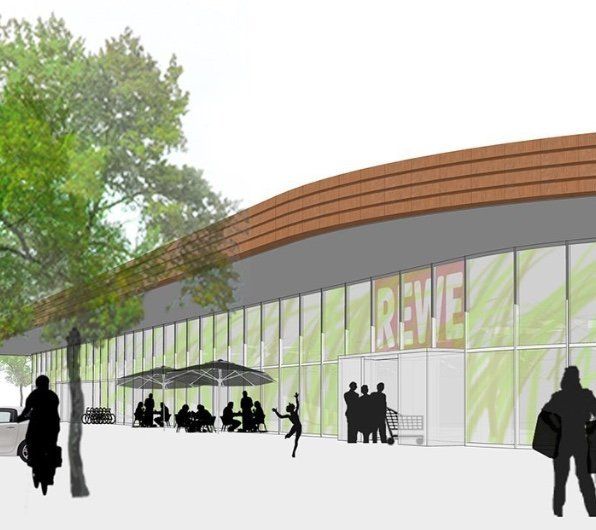Regional Retail Center Heidelberg Rohrbach
EU-wide Invited Competition
Architectural demands and profit maximization come heavily into conflict in the field of retail and discount trade architecture. Yet those buildings define our everyday culture and have to be carefully and responsibly considered by their planners. Beyond the global emergence of prominent epicenter and flagship stores, the new Heidelberg Market Hall is an attempt to develop architecture for simple discount trade buildings that act as a defining and developing element of the enterprise culture. The project shows that terms like supermarket, discount market and architecture are not mutually exclusive. The Heidelberg Market Hall tries to dissociate itself from the predominantly existing stereotypical mono-structures of existing supermarket and discount chains. The project intentionally counteracts the trend of the development of “architecture-free zones of selling and buying” that define themselves through their prefab-conformity, presenting only outsized discount signs in the urban and suburban context.
Awards
Merit Award (Ankauf) in competition
Concept
The tradition of the market hall as a design concept - the Heidelberg Market Hall's design concept is based on the traditional market hall of the 19th and 20th Century. Besides its function as a place of trade and exchange of goods, it was a place of social exchange and communication. With its proposed openness, its generous room height and the lightness of the structure, the suggested building reflects the high spatial quality of these traditional buildings; opposing the concept of a low, artificially illuminated sales room, the project on its specific site creates a new address with a high potential of identification for its users.
Design Concept
The tradition of the market hall as a design concept - the Heidelberg Market Hall's design concept is based on the traditional market hall of the 19th and 20th Century. Besides its function as a place of trade and exchange of goods, it was a place of social exchange and communication. With its proposed openness, its generous room height and the lightness of the structure, the suggested building reflects the high spatial quality of these traditional buildings; opposing the concept of a low, artificially illuminated sales room, the project on its specific site creates a new address with a high potential of identification for its users.
The building’s generous glass storefront allows for a strong connection between the intensively green exterior space and the interior mall and the sales rooms. The building invites its clients and visitors; the interior and the external promenades are separated only through a thin layer of glass, which opens up to allow free flow of people in the café and restaurant area. The entire building is flooded with natural daylight; in addition to the floor-to-ceiling-glazing on the east and west façade, huge skylights made from EFTE-foil allow additional light enter into the building. Direct sunlight penetration is avoided through wooden lamellas in front of the west façade as well as above the EFTE skylights.
The different stores are accessible through the mall zone, which serves as an interior circulations space as well as it provides space for communication and social interactivity. As on the traditional market place, shopping can be connected with a pleasant, communicative stay; the pure act of buying is complemented with the social experience of meeting and talking to people.
Project Blackboard:
Competition: 2008
Size: 92,000 SF
Designed to Passive Haus Standard for commercial buildings
Site Development, Architecture: Atelier Jörg Rügemer
Client: Reinhard Retail Center GmbH, Bahnhofstraße 1, 69207 Sandhausen
Photo credits: Atelier Jörg Rügemer








